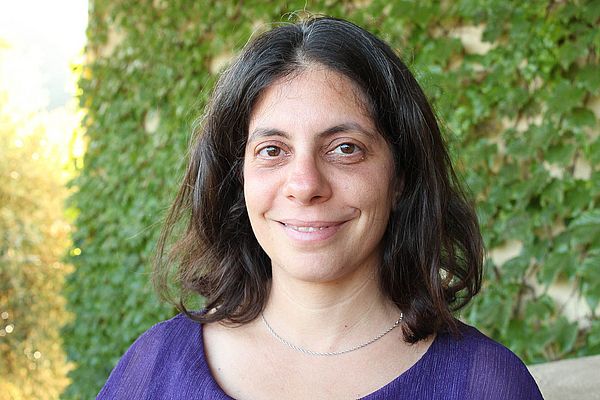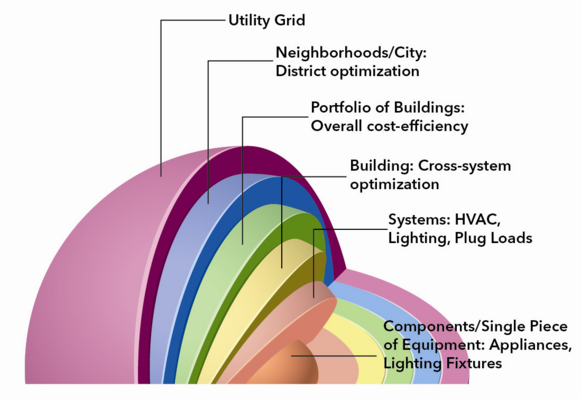Like most industries, utility companies operate in silos according to function. But, what would happen if we were able to break down those silos? That is one result of intelligent efficiency (IE).
In its most basic form, IE connects the dots of all things energy using information and communication technology (ICT) to reduce energy consumption. IE can be very localized-a single system or household-or expand to include a set of households in a neighborhood, a portfolio of buildings, a city, or even the whole utility grid. Other terms that help explain IE are: continual optimization, systems based approach to creating a relationship, and making data useful.
The utility industry has mostly been built around generation, transmission, and distribution, with little focus on the end user. This traditional structure is changing as data becomes standardized and shared across silos. Anyone who wants information will be able to access it. In addition, as technology prices decrease and potential concerns of electricity prices increase, more consumers will adopt energy efficiency and distributed generation. Subsequently, the increase in energy efficiency and distributed generation resources will reduce utility revenues. These trends are influencing discussions about the utility of the future.
In the U.S., several states are considering what is next for the utility model. New York has developed the Reforming the Energy Vision (REV) and established a distributed system platform (DSP), which is a kind of market exchange system for distributed energy. Similarly in California, regulators established the loading order, which is a hierarchy for considering the lowest-cost non-centralized fossil fuel-based resource for energy.
Many utilities believe competition to their traditional services will come in various forms, including data-related services and beyond-the-meter energy efficiency and demand response solutions ( i.e. behavior based)-and both heavily rely on IE. Traditional utility end users are now pushing for more non-centralized utility-based resources. IE broadens the scope and capability for energy users to independently act and make decisions on their energy usage. It speeds up the adoption process (or so we hope) and lowers overall energy consumption. And this is only one of the many benefits.
IE was the subject of a recent American Council for an Energy-Efficient Economy (ACEEE) conference. ACEEE defines IE as "a systems-based holistic approach to energy savings, enabled by ICT and user access to real-time information. Intelligent efficiency differs from component energy efficiency in that it is adaptive, anticipatory, and networked."
Summarized by the ACEEE, IE is "the convergence of technology and behaviors that saves energy." Is it not simply another vehicle to deliver energy services to end users?
The important elements and the challenges lie in how to market IE and how to convince end users to adopt and engage with IE technologies and related services. The discussion extends beyond energy benefits into the varied factors that influence behavior change and consumer decisions (e.g., energy culture, behavior, energy and climate change conference).
As cleverly described at the 2014 ACEEE IE conference by Ben Bixby, director of energy products at Nest Labs, there are products that are business to business, business to geek, and business to consumer. We need to make sure technologies are accessible to consumers. For years, we have had sophisticated technologies, such as SCADA systems, energy information systems, interval billing data, various consumer dashboards, and other data inputs. But it is the combination of data and people (i.e., the communication) in a digestible, agreeable manner that has been the challenge. This challenge is further complicated by the perceived benefits of energy efficiency and hence a need to look beyond energy cost savings for other benefits, as being provided in business to consumer products. Traditional barriers still exist, and some decision makers-homeowners, tenants, CFOs, building operators, and others- do not yet see the various components as integrated or holistic.
In the energy efficiency business, this new level of interconnectivity in the form of real or near real-time information and hyper-connectivity of components, could and should expand in its approach to include distributed resources, which encompasses storage, distributed generation, and demand response. This will provide consumers with rich, actionable knowledge for making decisions about energy usage and it will increase the level of engagement. This engagement will come in many forms: reduced technology costs, increased energy costs, more accessible information, and markets that allow for streamlined decisions within the framework of the utility of the future. We are witnessing a transformation to the world of transactive energy. This change will provide consumers the full potential to make decisions based on value (economics) and interoperability (control mechanisms) for energy efficiency, demand response, energy storage, and more.
As noted in Rod Janssen's article, energy efficiency has benefits beyond reducing carbon. In combination with the EU Energy Efficiency Directive for audits and promoting energy management systems, ensuring a future with IE will greatly enhance the benefits of the directive, as well as, achieving ISO5001 compliance. The financing products entering the marketplace will help bring this concept to more businesses, too, especially with the data available to provide verifiable achievements with IE to help garner confidence in any financed projects.
A systems whole-building/facility approach to energy efficiency services is the future, but how do we move beyond the component-based definition of energy efficiency? At DNV GL we are currently developing methods to provide ICT in a cost-effective manner that empowers people to act and can immediately see benefits (real or perceived). It will be these innovations along the continuum of technology and human behavior that will take IE from concept to reality.
By Karen Maoz, Interim Head of Department, Sustainable Energy Use, DNV GL

























































